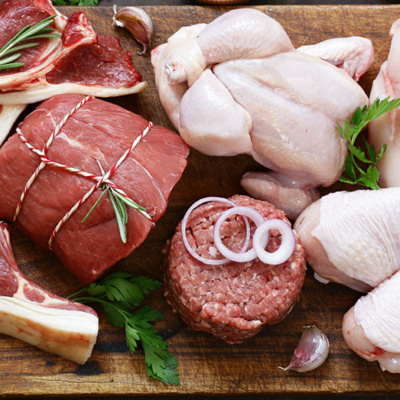top of mind news
- Hellman’s Build A Bowl Contest
- Give Your Managers A Competitive Edge
- Commercial Leases: How State Laws Can Vary and Affect Your Lease
- Beyond Meat Q2 Sales Quadruple, But Replacing Meat? That’s A Different Story
- Summer Menu LTOs Could Be The Key To Unlocking Profits
the farm
Poultry
 For the week ending July 20th, chicken harvests eased from the week prior but were 2.1% larger than last year. Bird weights have been running well over a year ago since early June, failing to exhibit the more typical declines from late spring into mid-summer. Last week chicken production was up 3.8% from the prior week but was 5.5% more than last year during the past six-weeks. Despite larger chicken output, dark meat as well as wing prices have been firm but breast meat, tenders, and whole bird prices have weakened. While production is not expected to fall sharply year-over-year, the chicken output gains should narrow which could support broiler prices this fall.
For the week ending July 20th, chicken harvests eased from the week prior but were 2.1% larger than last year. Bird weights have been running well over a year ago since early June, failing to exhibit the more typical declines from late spring into mid-summer. Last week chicken production was up 3.8% from the prior week but was 5.5% more than last year during the past six-weeks. Despite larger chicken output, dark meat as well as wing prices have been firm but breast meat, tenders, and whole bird prices have weakened. While production is not expected to fall sharply year-over-year, the chicken output gains should narrow which could support broiler prices this fall.
Beef
Last week’s cattle harvest came in at 651k head, the largest for the week since 2011, and continues to show packers’ desire to run aggressive production schedules. While the Choice cutout typically declines near 6% throughout July, this year’s move was a more muted 2% decline as the middle meats and grinds have offered support. Labor Day is the last beef “holiday” of the summer, and prices are expected to firm into mid-to-late August. But seasonal downside price action is likely in the late summer, especially as interest on the beef trim and grinds fades. Still, a resurgence of higher beef prices is anticipated in the fall.
Pork
Despite aggressive pork production throughout the early summer, with output up 7.4% over the past six weeks, pork prices have been on the rise since mid-July. The USDA pork cutout is up more than 22% from mid-month. Hams and belly prices have led the charge but the remaining primals have been tame in comparison. Currently, it does not seem that the upside price action is being driven by exports, instead depressed late-spring pork prices appear to have garnered a greater degree of demand and pork features are expected to reemerge later this summer.
The Sea
Seafood
 The major Canadian snow crab fishing season has culminated. The total Newfoundland and Gulf of St. Lawrence snow crab catch this year is estimated at 50.8 thousand metric tons which is 10% bigger than the 2018 catch but still historically small. The Alaskan snow crab fishing season won’t get underway in a big way until January and the quota this year is not anticipated to be big.
The major Canadian snow crab fishing season has culminated. The total Newfoundland and Gulf of St. Lawrence snow crab catch this year is estimated at 50.8 thousand metric tons which is 10% bigger than the 2018 catch but still historically small. The Alaskan snow crab fishing season won’t get underway in a big way until January and the quota this year is not anticipated to be big.
The Garden
Produce
 The lettuce markets are moving lower due in part to better supplies. The 24-count iceberg lettuce market has declined nearly 74% during the last two weeks to its lowest level since early June. History suggests that the downside price risk in the lettuce markets from here may only be a couple of dollars per case. The avocado markets have eased during the last week as well with the 48-count Hass average price reaching its least expensive level in seven weeks. That said, avocado supplies are expected to remain erratic into the fall.
The lettuce markets are moving lower due in part to better supplies. The 24-count iceberg lettuce market has declined nearly 74% during the last two weeks to its lowest level since early June. History suggests that the downside price risk in the lettuce markets from here may only be a couple of dollars per case. The avocado markets have eased during the last week as well with the 48-count Hass average price reaching its least expensive level in seven weeks. That said, avocado supplies are expected to remain erratic into the fall.
The kitchen sink
Dairy
After hitting the highest level in 32 months in July the cheese block prices retreated (from that level) but remain well above a year ago. June 30th U.S. cheese inventories were .5% smaller than last year and stocks fell during June for only the fifth time in the last 32 years. The cheese markets can still rise in the near term but usually peak for the year in late-August. In mid-July, the spot butter market priced the highest in 14 months but declined the remainder of the month. Butter stocks on June 30th were 2.6% smaller than 2018. Butter prices usually peak for the year in early-September.
Grains
 Recent weather for the corn and soybean crops has been conducive for development which has weighed on the markets along with struggling corn and soybean export sales. But the USDA acreage numbers release on August 12th which could sway the market in either direction. The downside might be limited in the near term.
Recent weather for the corn and soybean crops has been conducive for development which has weighed on the markets along with struggling corn and soybean export sales. But the USDA acreage numbers release on August 12th which could sway the market in either direction. The downside might be limited in the near term.
Oil
 Nearby natural gas futures found support over the last week. As of July 26th, U.S. natural stocks were 13.2% above a year ago but were 5.6% smaller than the five-year average for the date. There remains big time support at $2.00/MMBtu.
Nearby natural gas futures found support over the last week. As of July 26th, U.S. natural stocks were 13.2% above a year ago but were 5.6% smaller than the five-year average for the date. There remains big time support at $2.00/MMBtu.









